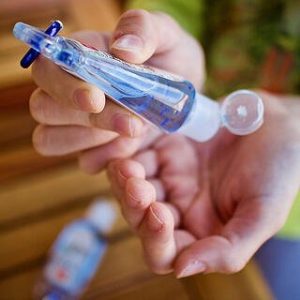 ACROSS THE COUNTRY, some provinces and cities are starting to reopen, but that doesn’t mean we should immediately stop all precautionary measures and go straight back to life as usual. Every little bit we can do helps ensure that hospitals don’t get more new cases than they can handle, so let’s quickly review the basics.
ACROSS THE COUNTRY, some provinces and cities are starting to reopen, but that doesn’t mean we should immediately stop all precautionary measures and go straight back to life as usual. Every little bit we can do helps ensure that hospitals don’t get more new cases than they can handle, so let’s quickly review the basics.
Social Distancing
Basically, social distancing means staying at home and avoiding physical contact with other people as much as possible, remaining at least six feet apart and keeping errands and outings to a minimum. The more people do this, the fewer chances the virus will have to spread.
Hand Washing
COVID-19 is spread through person-to-person contact or by touching things an infected person has touched. Scrubbing with ordinary soap is an excellent way to kill germs, especially coronavirus, but it’s important to wash every part of our hands to get the full benefit. It also helps to keep our nails trimmed, because germs can flourish under them, where they are very difficult to reach.
Minimizing Hand-to-Face Contact
Any time we touch our faces, we transfer germs from our hands to our mouths and eyes. Resist the urge to rub itchy eyes or poke at a stuck piece of food with your finger! Keep some 70% alcohol hand sanitizer nearby or wash your hands first for the times when touching your face can’t be avoided.
Sanitizing Surfaces and Devices
No amount of hand washing can keep the germs at bay forever if the surfaces we touch throughout the day remain dirty. Regular wipe-downs of frequently touched surfaces with alcohol or bleach-based cleaners keeps germs from spreading! This includes things we might not typically think to clean, like doorknobs, steering wheels, light switches, and, of course, our electronic devices!
Using Personal Protective Equipment (PPE)
When we go out in public, especially to places where social distancing is harder to do, it’s a good idea to wear cloth face masks. Simple cloth face coverings are great for running essential weekly errands, and they can be fashioned from common materials most of us have around the house. The American CDC’s website offers easy instructions for a few different ways to make cloth masks, including two no-sew versions. Click ont he following link to watch.
Just As Important: Staying Informed
As we continue to follow safety and sanitation guidelines, we also need to stay current with accurate information about the pandemic. A great source of information is Public Health. https://www.niagararegion.ca/health This site is regularly updated with new data and recommendations for how we can keep ourselves safe and slow the spread of coronavirus.
Vaccinations
A number of different coronavirus vaccines have made it through the testing and approval process and are now being distributed in the US at a rate of over 1.3 million doses per day. In Canada, we have had 4,264,590 doses delivered to the provinces for administration. It’s a testament to the wonders of modern science and technology that these vaccines are ready so soon and that they have such a high efficacy rate.
We Can Do This Together
Continuing to social distance and wear masks in public are still critical for slowing the spread of the virus, but the vaccines will be available to much wider sections of the population soon. “Back to normal” is finally in sight thanks to these vaccines, and we can’t wait!
